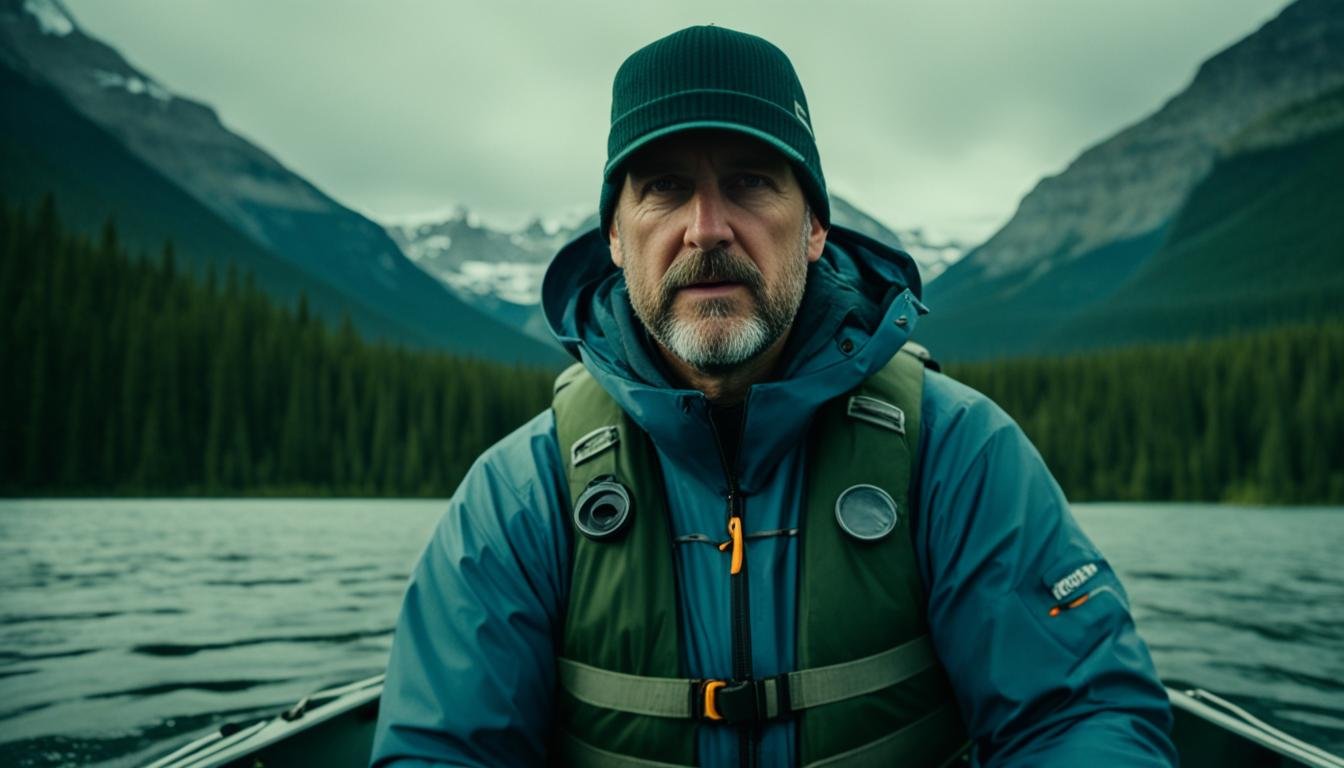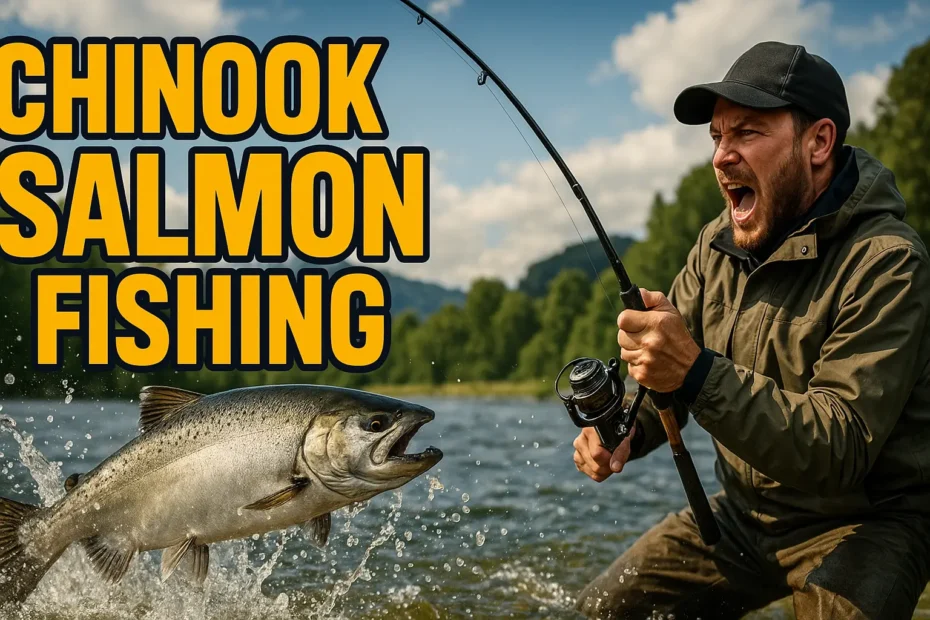Chinook salmon fishing involves catching large, prized salmon, mainly in Canada and the Pacific Northwest. Anglers follow specific regulations for sustainable practices.
In a Nutshell: Chinook Salmon Fishing
- You will learn about current Chinook salmon fishing rules.
- You will discover top fishing spots and best seasons.
- You will understand key conservation efforts.
Estimated reading time: 7 minutes
Chinook salmon are also called King salmon. They are famous for their large size and strong fights. Many anglers love to catch them. This guide helps you understand Chinook Salmon Fishing in 2025. You will learn about rules, spots, and how to fish responsibly.
Understanding Chinook Salmon Fishing
Chinook salmon are a top choice for anglers. They are known for their size and how hard they fight. Rules for fishing these salmon change often. In 2025, new rules are in place. This is especially true in Canada and the Pacific Northwest. We will look at current rules, best places to fish, and efforts to protect these fish.

Key Regulations & Conservation
Fishing for Chinook salmon has clear rules. These rules help keep fish populations healthy.
General Rules in Canada In Ontario, you can keep no more than two trout and salmon combined per day. This rule helps protect fish. It is part of bigger efforts to save fish species. You can find these rules in the Ontario fishing regulations summary.
Chinook Salmon in Ontario You often find Chinook salmon in Lake Ontario. They are also in rivers that flow into it, like the Salmon River. These areas are popular for fishing. You can catch and release fish. You can also keep some. The Ontario government adds fish to these waters. This helps local fisheries. It also ensures fishing can continue for years.
Changes in Fishing Rules New ideas for managing salmon fishing are being discussed. For example, marked selective Chinook fisheries are a goal. This means fishing only for hatchery-raised fish. These fish have a special mark. This idea aims to reduce catching other fish by mistake. However, this process has faced delays.
Rules for Ocean Fishing On the West Coast, NOAA Fisheries set rules for 2025 ocean salmon fishing. Commercial fishing is limited. This is because some Chinook numbers are low. But, you can still fish for fun in Washington, Oregon, and California. These rules help protect endangered species. They also ensure fishing can last. You can read more about 2025 ocean salmon specifications.
Chinook Salmon Daily Catch Limit
Ontario rule: Max 2 trout/salmon combined per day.
Top Spots & Seasons for Chinook
Knowing where and when to fish helps you catch more Chinook.
Best Fishing Spots
- Lake Ontario and Rivers: Lake Ontario is a top spot for Chinook. Its rivers, like the Salmon River, are also great. These places are busy in spring and summer. Many anglers visit these areas for salmon fishing in Canada.
- British Columbia: British Columbia also offers Chinook fishing. Look in places like the Fraser River. Other lakes nearby are also good. For more places, check out the best fishing spots in Canada.
Fishing Seasons
- Spring and Summer: These are the best times for Chinook salmon. More fish are around. Water conditions are also good.
- Fall: You can still catch Chinook in the fall. This is true in areas where fish runs happen later.
Best Techniques & Gear
Catching Chinook salmon needs the right approach and equipment.
Angling Techniques
- Artificial Lures: Many anglers use artificial lures. Spoons and plugs are very effective. They look like injured fish. This attracts Chinook salmon. You can learn more about fishing techniques.
- Bait: Live bait can also work well. Anchovies or herring are good choices. Always check if bait use is allowed in your area.
Gear Requirements
- Rods and Reels: You need strong rods and reels. Chinook salmon can weigh 50 pounds or more. Your gear must handle such large fish. Learn about fishing gear.
- Fishing Licenses: Always get the right fishing license. Follow local rules for gear and how many fish you can keep. This is part of responsible fishing in Canada.
Affiliate Disclaimer: We may earn a commission from purchases made through the links on this page without any addiitonal costs for you. Thank you for supporting our website ! Appreciated 👍
- Check Rules: Always know the latest fishing regulations before you go.
- Pick the Spot: Go to known areas like Lake Ontario or Fraser River.
- Use Right Gear: Strong rods and reels help land big Chinook.
- Respect Limits: Follow catch limits to help fish populations.
Economic Impact & Future Outlook
Chinook salmon fishing affects local money and jobs. It also faces challenges.
Recreational Market Fishing for fun brings a lot of money to local areas. This is true in Ontario and British Columbia. It brings tourists. It helps small businesses. Tackle shops and guide services benefit.
Commercial Market Commercial fishing for Chinook salmon is harder now. This is due to rules and worries about saving fish. But where it is allowed, it helps businesses. These include seafood processing and distribution.
Conservation Challenges Keeping Chinook salmon numbers healthy is very important. This means managing how many fish are caught. It also means protecting their homes. Climate change and water quality can hurt salmon. Ongoing research helps find solutions.
Future Directions New fishing gear and ways to watch fish can help. They can make fishing better and more sustainable. Making rules simpler can also help. Working with other countries can improve efforts to save fish. Joining fishing conservation organizations can also help.
Conclusion
Chinook salmon fishing in Canada is an active sport. It has clear rules. These rules balance fun with saving fish. Knowing the latest rules and best ways to fish is key. Chinook salmon fishing is a loved activity. It helps local economies. It also connects people with nature.
Your Questions About Chinook Salmon Fishing Answered (Simply)
What is the best time to fish for Chinook salmon?
What bait is best for Chinook salmon?
Where can I fish for Chinook salmon in Ontario?
Are Chinook salmon good to eat?
What are the regulations for Chinook salmon in Canada?
How big do Chinook salmon get?
How do conservation efforts affect Chinook salmon fishing?



